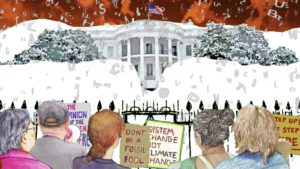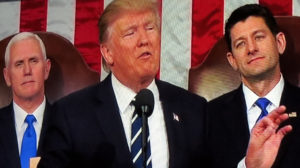Winners and Losers of the November Jobs Report
Transportation and warehouse companies have added jobs, factory employees exceeded 12 million people for the first time in four years, the elderly are seeking work, pay remains stagnant at the bottom, and the long-term unemployed are still screwed.
Transportation and warehouse companies have added jobs, factory employees exceeded 12 million people for the first time in four years, the elderly are seeking work, pay remains stagnant at the bottom, and the long-term unemployed are still screwed.
The Huffington Post reports that a rise in online shopping has affected the traditional holiday season hiring boost, with the transportation and warehouse sectors adding 30,500 such jobs in November, double the number added of that type in the same period last year. Physical stores added 24,800 workers, half the increase of the previous year.
Assembly lines are “still cranking away” with 27,000 new manufacturing jobs and an average of 4.5 hours of overtime per employee each week. Americans over age 65 are unemployed at a rate of 4.9 percent compared with 7 percent for adults as a whole as the number of senior citizens who hold or seek work has grown in recent years by nearly half a million to 7 million Americans.
Restaurant and hotels created nearly 16 percent of new jobs in the past 12 months — 361,000 workers, but owners raised their hourly pay only 15 cents to $11.80 in November. That puts a parent and a child roughly at the poverty line. Additionally, since September, leisure industry wages have dipped 3 cents an hour.
And here’s the grim report for the long-term unemployed:
Even as the number of unemployed Americans has fallen nearly 350,000 in the past two months, the ranks of the long-term unemployed have barely budged. They number about 4.1 million. And they’re not catching many breaks. Companies are shying away from hiring workers with extended gaps in their resumes.
More than 37 percent of unemployed Americans in November have been out of work for half a year or more, a higher proportion than in October. If most of these Americans continue to be viewed as unemployable, that trend will hold back the economy’s growth.
White House officials and Democrats in Congress argue that such figures illustrate the need for extended unemployment benefits, which are set to expire Dec. 28. The extended benefits program provides 28 extra weeks in most states, paid for by the federal government, on top of the 26 weeks typically available.
If that program lapses, 1.3 million people will immediately lose benefits. An additional 800,000 would do so in the first two months of 2014. The White House and Democrats on Capitol Hill have stepped up their support for extending the extra benefits as part of budget talks.
— Posted by Alexander Reed Kelly.
Your support matters…Independent journalism is under threat and overshadowed by heavily funded mainstream media.
You can help level the playing field. Become a member.
Your tax-deductible contribution keeps us digging beneath the headlines to give you thought-provoking, investigative reporting and analysis that unearths what's really happening- without compromise.
Give today to support our courageous, independent journalists.




You need to be a supporter to comment.
There are currently no responses to this article.
Be the first to respond.